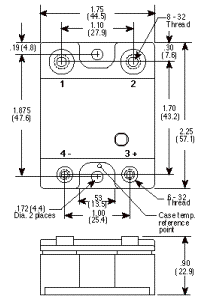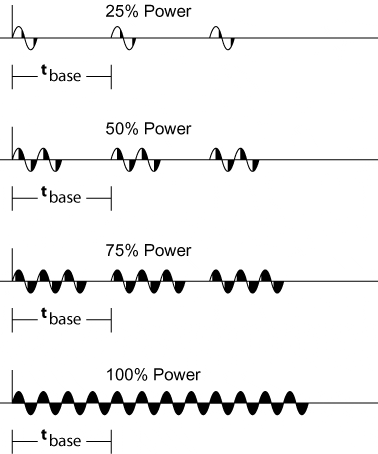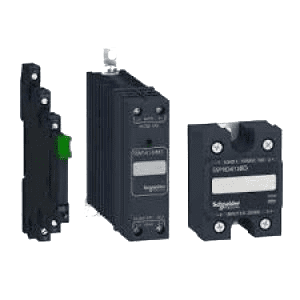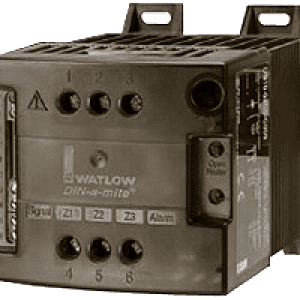Home / Power Controls / Solid State Relays
Solid State Relays
Solid State Relay Power Controllers
We have Watlow and Crydom Solid State Relay switching relays (SSR) for a more precise temperature and power control in applications where you need tighter control and smooth switching. We carry all styles of power controllers to fit your process needs. With solid state switching, your heater life is increased and temperature control is optimized. Due to the nicer switching of SSR’s, users can increase watt densities of their heaters and safely control them without the over-shooting of the mechanical switching. SSR’s allow users to switch power with AC or DC input control. Our sales engineers can help you select the correct solid state relay product for your process. Call 844-787-4328 to work with one of our engineers… We can help you select the proper solid state power controller.
Dimensions of Hockey Puck Solid State Relays and Features:

- Optically isolated
- Some Units have a LED status indicator
- Clear safety cover Optional
- 800 volt blocking voltage (3V models)
- 1200 volt blocking voltage (6V models)
- 4000 volt isolation
- Zero voltage turn-on
- Improved built-in snubber
- High surge capability
- 100% tested at rated current
- U.L. recognized
- C.S.A. certified
- CE compliance
SV Dimensions: Inches (mm)
Solid State Zero Firing and Phase Angle Firing:
How the solid state AC switch controls any given load depends on how and when the SCR gates are triggered. The firing “pulse” to the SCR gate is generated by a trigger circuit which in turn is usually controlled by a manual potentiometer, instrument controller, milliamp signal or ON/OFF control voltage. For proportional control of resistance heating loads, there are two types of SCR firing methods available:
Zero Firing
Zero firing is a method of proportional voltage control in which the SCRs are fired only when the voltage wave form crosses the zero voltage level at half cycles. Zero fired power controls are useful when radio frequency interference (RFI) and line voltage distortions characteristic of phase angle power controls must be avoided.
Within a given time base, the trigger circuit will energize the SCR gate for a certain number of cycles and then the trigger circuit will withdraw the pulse from the gate for a number of cycles. Power is regulated to the load by the ratio of the number of cycles ”ON” to the number of cycles “OFF” over the given time period

Phase Angle Firing
Phase angle fired controls vary the voltage to the load by controlling the point of conduction within each ½ sine wave, by applying a timed trigger pulse to the SCRs-hence the name phase angle controlled. Therefore this method provides infinitely variable AC voltage control.
The result is that only a part of each cycle is “ON” and the remaining part of the cycle is “OFF” providing proportional RMS voltage control. This method provides a finer resolution of AC power control, but can generate RFI and line voltage distortions.



